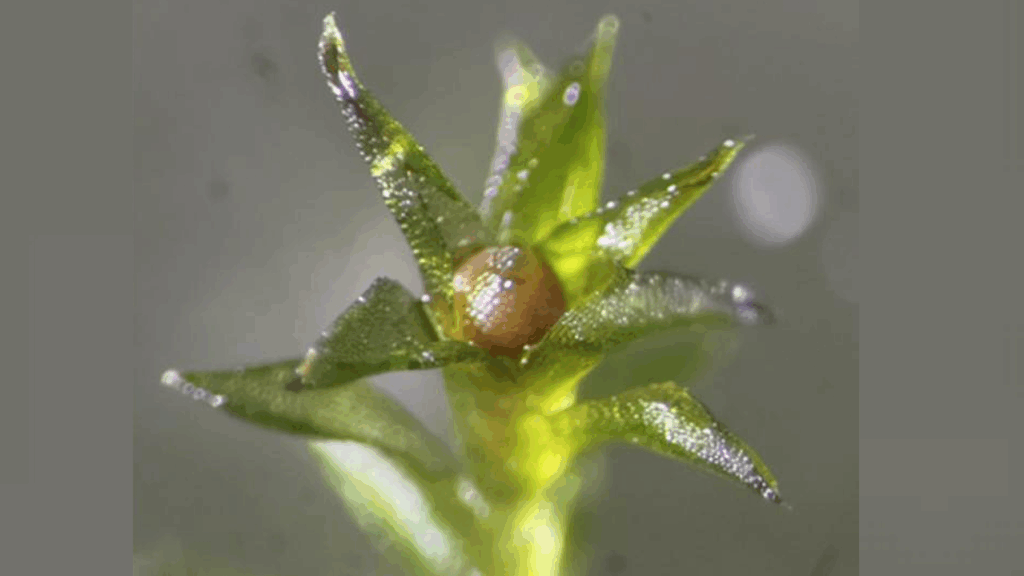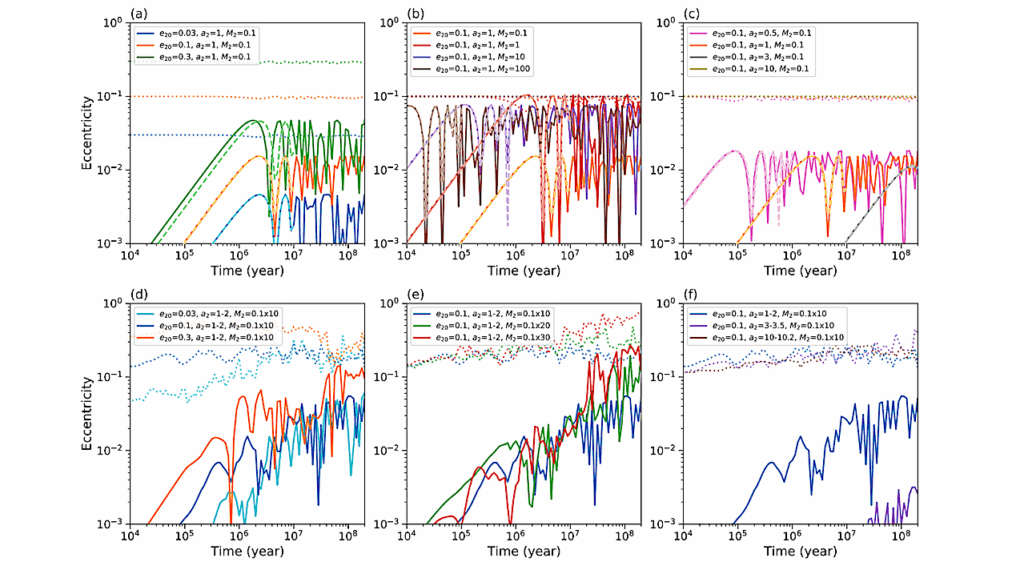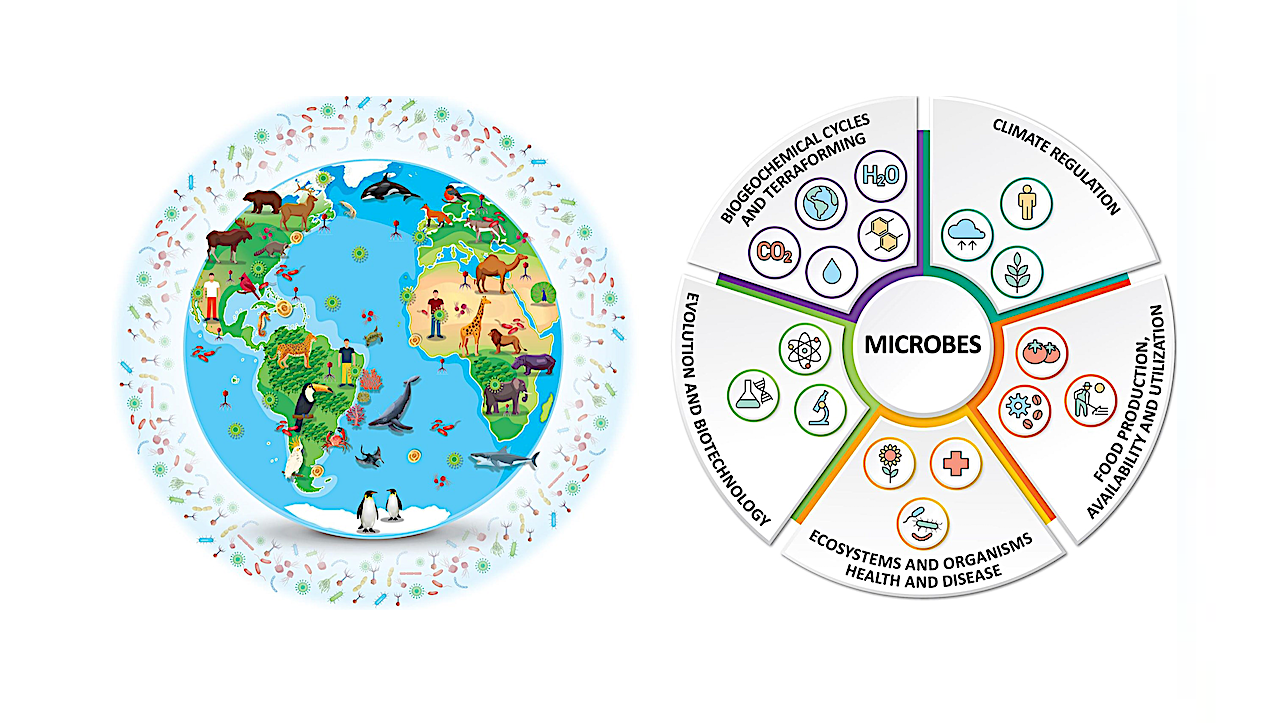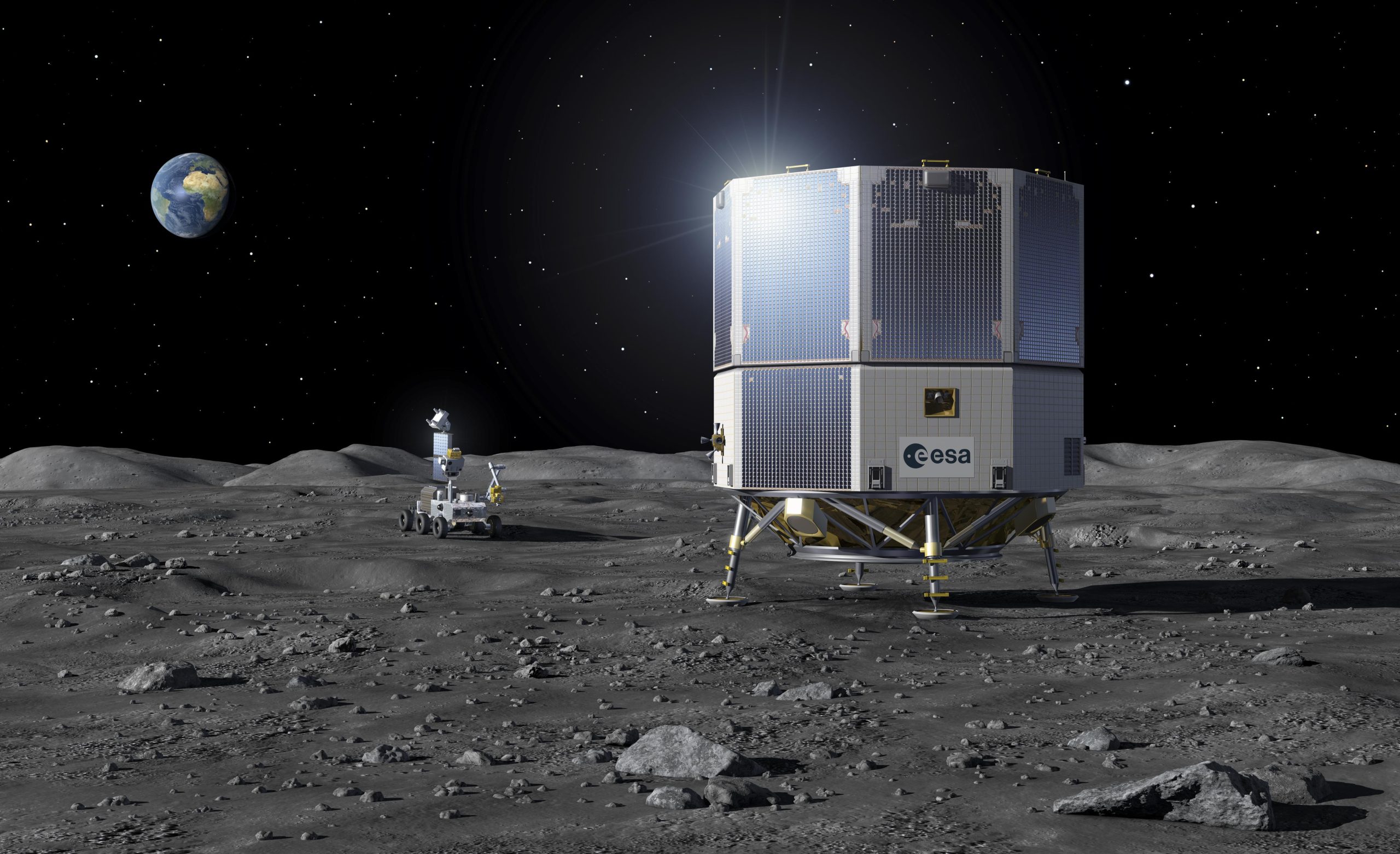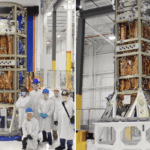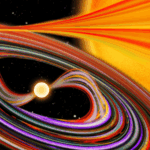Now Reading: TOI-333b: A Neptune Desert Planet Around A F7V star
-
01
TOI-333b: A Neptune Desert Planet Around A F7V star
TOI-333b: A Neptune Desert Planet Around A F7V star
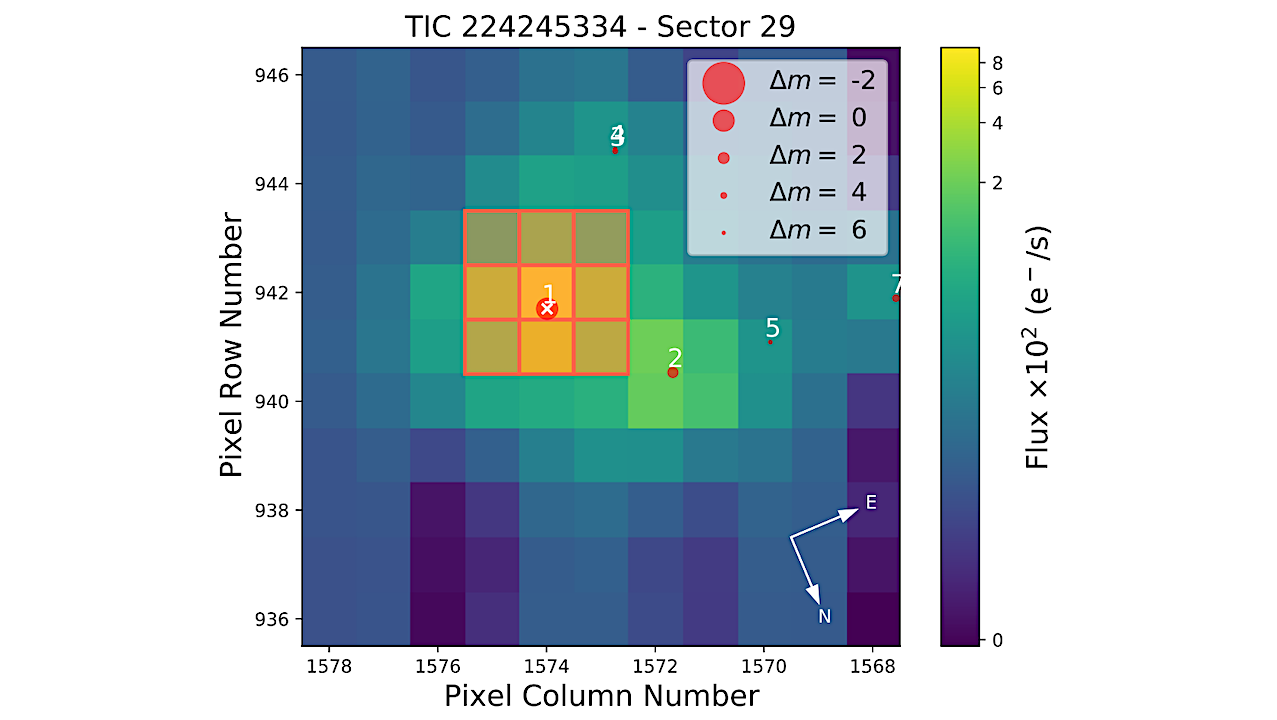

TESS sector 29 full-frame image cutout (11 x 11 pixels) generated with the tpfplotter script described in Aller et al. (2020). TOI333b is shown in the centre labeled number 1, followed by GAIA DR3 6535747602288702720 (number 2), a G = 14.11 mag, and 51″ away from the planet. The star did not contribute significant flux to the aperture, thus negligible dilution was observed in TESS. — astro-ph.EP
Observations have shown that planets similar to Neptune are rarely found orbiting Sun-like stars with periods up to ~4 days, defining the so-called Neptune desert region.
Therefore, the detection of each individual planet in this region holds a high value, providing detailed insights into how such a population came to form and evolve. Here we report the detection of TOI-333b, a Neptune desert planet with a mass, radius, and bulk density of 20.1 ± 2.4 M⊕, 4.26 ± 0.11 R⊕, and 1.42 ± 0.21gccc, respectively. The planet orbits a F7V star every 3.78 d, whose mass, radius and effective temperature are of 1.2 ± 0.1msun, 1.10 ± 0.03rsun, and 6241+73−62 K, respectively.
TOI-333b is likely younger than 1 Gyr, which is supported by the presence of the doublet Li line around 6707.856 ~Å and its comparison to Li abundances in open clusters with well constrained ages.
The planet is expected to host only 8.5+10.9−8.3% gas-to-core mass ratio for a H/He envelope. On the other hand, irradiated ocean world models predict 20+11−10% H2O mass fraction with a core fraction of 35+20−23%. Therefore, we expect that TOI-333b internal composition may be dominated by a pure rocky composition with almost no H/He envelope, or a rocky world with almost equal mass fraction of water.
Finally, TOI-333b is more massive and larger than 77% and 82% of its Neptune desert counterparts, respectively, while its host ranks among the hottest known for Neptune Desert planets, making this system a unique laboratory to study the evolution of such planets around hot stars.
Douglas R. Alves, James S. Jenkins, José I. Vinés, Maximilano Moyano, David R. Anderson, Christian Magliano, Giovanni Covone, Keivan G. Stassun, Abderahmane Soubkiou, Edward Gillen, Matthew P. Battley, Alexander Hughes, David J. Armstrong, Suman Saha, Faith Hawthorn, Peter J. Wheatley, Karen A. Collins, Richard P. Schwarz, Gregor Srdoc, Ioannis Apergis, Tafadzwa Zivave, Monika Lendl, Benjamin M. Tofflemire, John P. Doty, Christina Hedges, Ismael Mireles, Matthew R. Burleigh, Alicia Kendall, George T. Harvey, Michael R. Goad, Sarah L. Casewell, Troy Edkins
Comments: 21 pages, 19 figures, 7 tables, accepted for publication in A&A
Subjects: Earth and Planetary Astrophysics (astro-ph.EP); Solar and Stellar Astrophysics (astro-ph.SR)
Cite as: arXiv:2511.13832 [astro-ph.EP] (or arXiv:2511.13832v1 [astro-ph.EP] for this version)
https://doi.org/10.48550/arXiv.2511.13832
Focus to learn more
Submission history
From: Douglas Rodrigues Alves
[v1] Mon, 17 Nov 2025 19:00:05 UTC (3,424 KB)
https://arxiv.org/abs/2511.13832
Astrobiology,
Stay Informed With the Latest & Most Important News
Previous Post
Next Post
-
 012024 in Review: Highlights from NASA in Silicon Valley
012024 in Review: Highlights from NASA in Silicon Valley -
 02Panasonic Leica Summilux DG 15mm f/1.7 ASPH review
02Panasonic Leica Summilux DG 15mm f/1.7 ASPH review -
 03How New NASA, India Earth Satellite NISAR Will See Earth
03How New NASA, India Earth Satellite NISAR Will See Earth -
 04And Thus Begins A New Year For Life On Earth
04And Thus Begins A New Year For Life On Earth -
 05Astronomy Activation Ambassadors: A New Era
05Astronomy Activation Ambassadors: A New Era -
06SpaceX launch surge helps set new global launch record in 2024
-
 07Space Force plans new ‘Futures Command’ amid pressure to speed up modernization
07Space Force plans new ‘Futures Command’ amid pressure to speed up modernization












